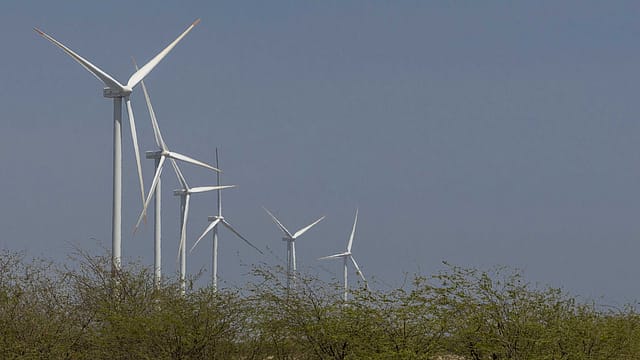German wind turbine major Enercon returns to India handholding MSMEs for production
ADVERTISEMENT

Enercon GmbH, one of the top onshore wind turbine makers in the world, is making a comeback to India and plans to make the country a hub for global exports. "We are concentrating only on exports and by next year plan to launch a wind turbine in India, suiting India's lower wind speeds," PKC Bose, vice-chairman and managing director at Enercon Windenergy, tells Fortune India.
In the second innings, Enercon, the second-biggest wind turbine maker in Europe behind Vestas, is following a contract manufacturing model as part of the process to make its supply chain international. Enercon has tied up with three MSMEs for producing critical parts. Coral Manufacturing Works (CMW) of Erode, Tamil Nadu is making Enercon's E-138, EP3 and E2 WEC generators. Production has started and about 20 generators have been exported to South Korea since April. A 60,000 square metre manufacturing facility was set up in Erode last year and plans are to make about 200 units a year. Enercon hopes to earn export revenues of ₹800 crore from the first year of operations, going up progressively 20-25% every year.
Another MSME, Toolfab of Trichy in Tamil Nadu will make 138-150 metre sized towers. These will be modular towers, which can be easily transported in trucks and get installed at locations quickly, unlike concrete tubular towers which require about six months for installation. Blades will be made by MSME Indutch Composites, at its plant in Sullurpet in north of Chennai near Andhra Pradesh. Plans are to make 140 blades this year and trial production will begin by June-July.
December 2025
The annual Fortune 500 India list, the definitive compendium of corporate performance, is out. This year, the cumulative revenue of the Fortune 500 India companies has breached $2 trillion for the first time. Plus, find out which are the Best B-schools in India.
Bose says these MSMEs had no prior experience of manufacturing wind turbine's critical machines, but Enercon's technical experts from Germany and India are working with them, besides helping them set up the facilities. Enercon has its corporate office and an R&D Centre based in Bangalore.
Privately held Enercon, founded by Aloys Wobben in Aurich, Germany in 1984, has revenues in excess of $4 billion and is one of the world's largest producers of wind turbines. It is not active in the U.S. market. In 1992, Enercon introduced the first gearless wind turbines in the world.
Sources said Enercon came to India in 1994, in a joint venture with the Ajay and Yogesh Mehra family and with Yogesh Mehra as the managing director. The JV ran smoothly for 12 years till 2006, when differences cropped up between the partners. Mehras accused Enercon of trying to take control and denying them technology and components. Enercon accused the Mehras of stealing technology and siphoning off funds. The JV broke, triggering a protracted legal battle in various courts, which ended only a few years ago in Enercon's favour. In 2019, the Bombay High Court upheld an arbitral award directing Mehra's to pay over ₹675 crore to Enercon, for breaches in the joint venture contract and ruled Enercon was entitled to get royalty for technical know-how since 2007 from the Mehras, said sources.
Bose says though India has huge potential in wind energy and as per the government's plan of having 500 gigawatt (GW) renewables by 2030, share of wind energy has to be 150 GW. This means we need to add 18 GW a year from now on (total installed capacity of wind power in the country is still less than 50 GW). But the problem is at the current bid tariff rates, it will be unviable for most project developers.
The tariff discovered in the latest bid of the Solar Energy Corporation of India (SECI) for wind power generation stood at ₹2.69 to ₹2.70 per unit. In current circumstances, it will be viable only if tariffs are around ₹3.3 to ₹3.5 per unit. What we require is policy and regulatory interventions to solve this. For example, India needs to have a repowering policy, like replacing common low yield turbines with high efficiency 4 MW turbines and above, he says.
